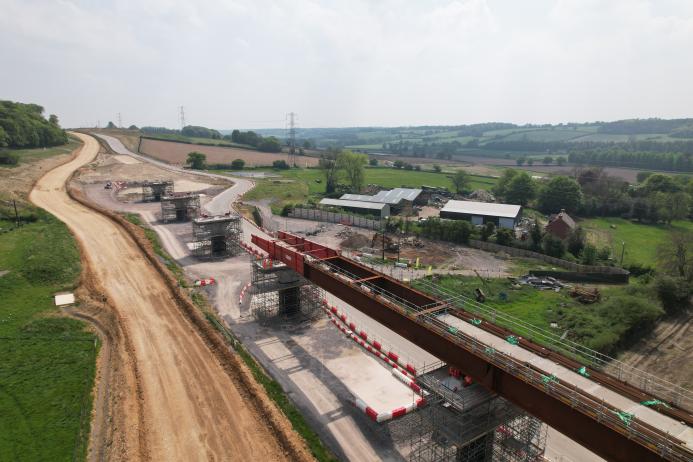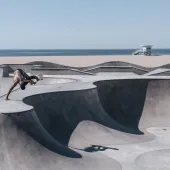HS2 completes second Wendover Dean Viaduct deck slide
New timelapse footage showing the latest stage of a complex year-long project to slide almost half a kilometre of bridge deck into position, high above Buckinghamshire's Misbourne Valley.
Over a 20-hour period last week, engineers working for the high-speed rail project carefully slid the 3,130-tonne structure 270m, using Teflon pads to reduce friction, a material usually found on the surface of a non-stick frying pan.
The deck of the Wendover Dean Viaduct, which will eventually stretch for 450m, is being assembled in three stages, ranging from 90m to 180m sections, with each one pushed out from the north abutment before the next section is attached behind it.
This painstaking process means the weight of the deck will increase with each push, up from an initial 590 tonnes at the start of work in January, to 3,700 tonnes by the end of the year.
At this point in the Chilterns, the railway will be on a slight gradient, so to help maintain control, the deck, which will eventually weigh the same as 264 double-decker buses, is being pushed slightly uphill, with the finish point approximately 1.8m higher than start point.
‘Double composite’ a UK first
The Wendover Dean Viaduct is the first major railway bridge in the UK to be built with a ‘double composite’ structure, which uses significantly less carbon-intensive concrete and steel than a more traditional design.
Instead of using solid pre-stressed concrete beams to form the spans between the viaduct piers, the hollow ‘double composite’ structure uses two steel beams sandwiched between two layers of reinforced concrete to create a more efficient super strong span.
A similar approach will also be used for HS2's Small Dean, Westbury, Lower Thorpe and Turweston viaducts.
All five viaducts are being built by HS2’s main works contractor, EKFB (Eiffage, Kier, Ferrovial Construction and BAM Nuttall) with the manufacture and installation of the beams being led by specialists at Eiffage Metal.
EKFB worked with their design partner, ASC (Arcadis, Setec and COWI) and architects Moxon on the ‘double composite’ approach, which was inspired by structures on the French and other European high-speed networks.
The approach is set to cut the carbon footprint of the structure by around half and help HS2 achieve its goal of halving the amount of embedded carbon in construction.
The beams are made of ‘weathering steel’ which naturally fades to a dark brown colour over time and will help match the natural tone of the surrounding countryside. Weathering steel gets its characteristic colour from a surface layer of corrosion which protects the steel and removes the need for regular painting.

The Wendover Dean Viaduct will be supported by nine evenly spaced piers, some of which are up to 14m high and all of which are now complete. These were formed from a series of hollow pre-cast concrete shells, manufactured in Northern Ireland, which were placed on top of each other and filled with concrete and steel reinforcing.
This approach was chosen to enable a crisp, clean external finish to the concrete, cut the amount of work on site and reduce disruption for local residents.







